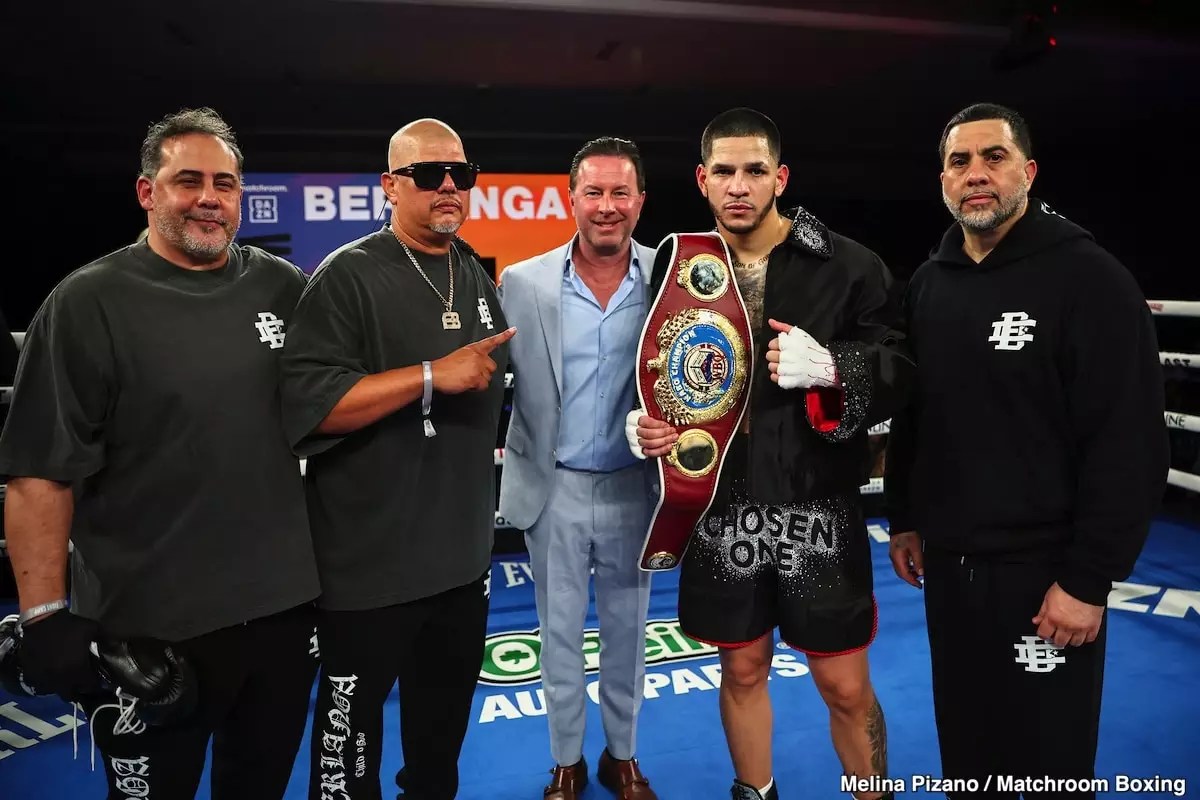On July 12th, boxing enthusiasts will find themselves in an unusually convoluted situation as Edgar Berlanga squares off against Hamzah Sheeraz, while the raucous backdrop of Shakur Stevenson and William Zepeda captures the attention as the supposed “main event” leading up to the fight. Now, it’s critical to unpack this promotional strategy by Ring Magazine, which opts for a narrative that may feel disjointed and downright perplexing to seasoned fans. Despite appearing as a well-curated card, the reasoning behind labeling these fights as co-features reeks of a cynical marketing maneuver that raises more questions than excitement.
The confusion surrounding fight card hierarchy reflects a larger dilemma in contemporary boxing promotions. By elevating the lesser-known Berlanga and Sheeraz to the headline slot on fight night, the industry risks alienating audiences who crave authenticity and commitment to quality matchmaking. These fighters, with records that hardly dazzle—Berlanga at 23-1 and Sheeraz at 21-0-1—pose as products of a promotional engine rather than as legitimate competitors. With only a fraction of their fights showcasing noteworthy challengers, is it any wonder that the boxing community is rife with skepticism regarding their abilities?
Marketing or Manipulation?
Labeling Stevenson versus Zepeda as the week’s “main event” while relegating it to a secondary role on the night of the fight seems to be a tactic crafted for sheer marketability rather than genuine competition. One could argue that this duality is a blatant attempt to mislead fans, suggesting that they should invest their hard-earned dollars into a PPV solely based on a smoke-and-mirrors approach. Is this a clever ruse to attract viewers who are misled into thinking they’re tuning in for top-tier talent, only to be met with the unfortunate reality of two fighters lacking in substance and credentials?
Such strategies serve to underscore a troubling trend in boxing—a shift from cultivating genuine rivalries and competitive matches to assembling cards that prioritize viewership over sporting integrity. The matchups we see evolve from meritocratic bouts, where talent reigns supreme, into orchestrated spectacles meant to capture attention, if not respect. It risks creating a landscape where fans grow disenchanted with the art of boxing, bewildered that the spotlight often glimmers on the least deserving participants.
A Fleeting Illusion of Prestige
If promoting Berlanga and Sheeraz as headliners is intended to create excitement, it fails to resonate with those who demand transparency and integrity over gimmicks. The elevation of seemingly lesser talents as headliners distracts from the rich tapestry of boxing history that celebrates true champions and epic battles. This trend is an affront to die-hard fans who expect the best to face the best; it’s disheartening to see narratives spun more from the perspective of revenue streams than athletic prowess.
If promoters want their cards to translate into substantial buys and genuine fanfare, they must wise up to the fact that authenticity—both in talent and promotion—will prevail over smoke and mirrors. As longtime enthusiasts of this sport grapple with confusion and disappointment, it’s imperative that we question—what are we truly witnessing? A boxing match or a mirage? Without addressing these concerns, the world of boxing may find itself wanders down a path that’s utterly devoid of competitive spirit and sporting justice.


Leave a Reply